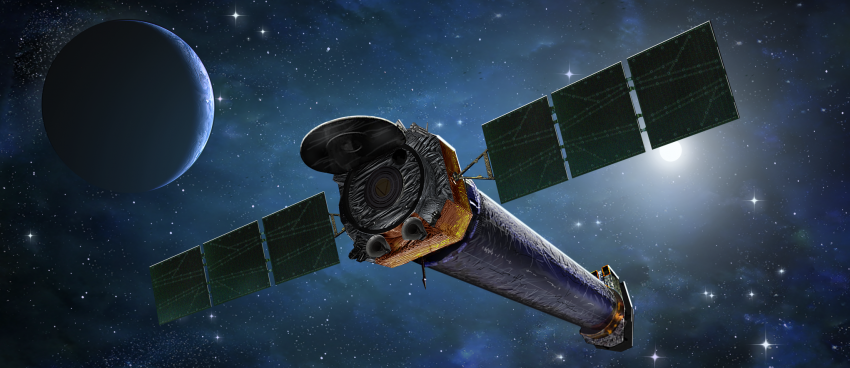Looking through Chandra's eyes

Cygnus A in radio (red) and X-ray (blue)
Image Credit: NASA/CXC
Chandra has been a game-changing Great Observatory for NASA. Launched in 1999, this X-ray observatory takes its name from the pioneering astrophysicist Subramanian Chandrasekhar who spent most of his career at the University of Chicago. Chandra combines soft and hard X-ray capability and high spatial resolution with high spectral resolution – it's a bit of a jack-of-all-trades for observing the high energy universe. It has produced revolutionary data on star birth and death, the x-ray background, jets and galaxy clusters, binary objects and cosmology… and lots more.
The spatial resolution of Chandra's data has made comparisons with ground-based optical images very fruitful, allowing an understanding of the studcture of supernova remnants (such as Cas A, on our cover this issue) and radio jets such as those from radio galaxy Cygnus A (pictured here).
Chandra has also played an important role in teasing out energy flows in galaxy clusters such as the Perseus Cluster, a target for high resolution spectroscopy because of the complex feedbacks between supermassive black holes, cluster gas and cluster galaxies. Chandra's High Energy Transmission Gratings have been used to observe active galactic nuclei, supernovae and binary systems, too, adding to our understanding of these objects.
Even after 20 years in space, Chandra has a rosy future. The observatory continues to function well, with few signs of old age. New opportunities are coming in particular from synergies with new observatories and surveys: gravitational wave astronomy, continued collaboration with the Event Horizon Telescope and with TESS, the Transiting Exoplanet Survey Satellite... there's plenty for this innovative and long-lived instrument to do in the future.


